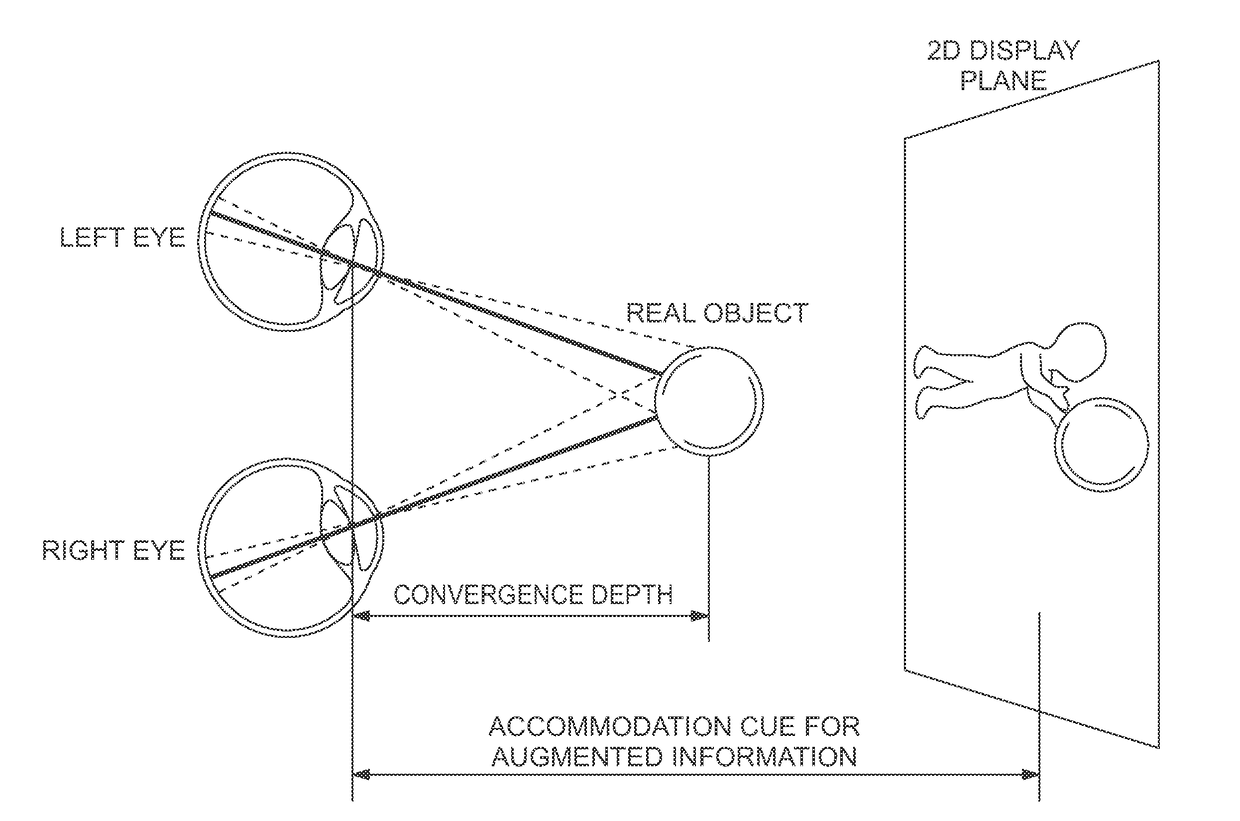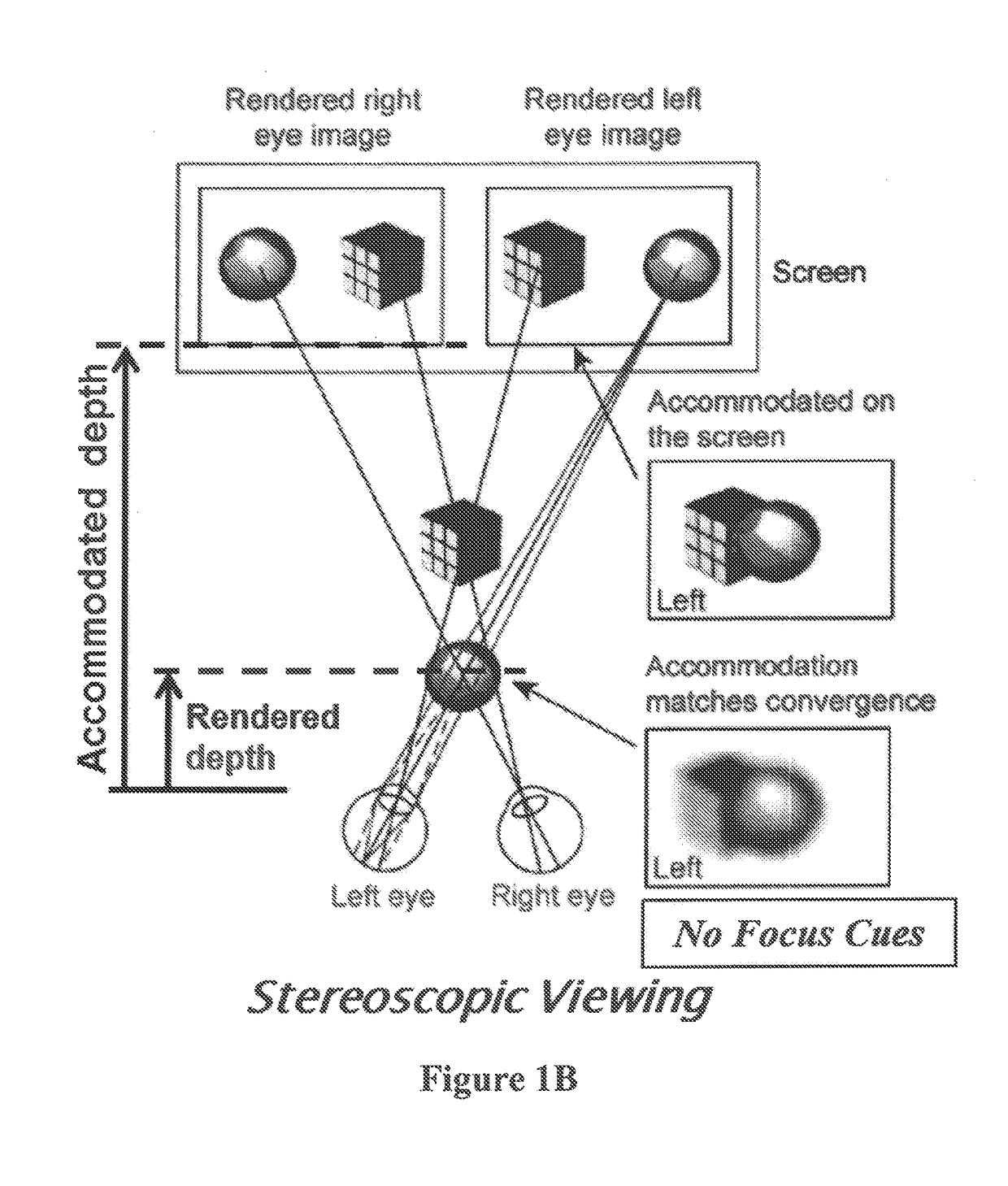Wearable 3D augmented reality display with variable focus and/or object recognition
a 3d augmented reality and focus technology, applied in the field of wearable 3d augmented reality displays, can solve the problems of limited ability to explore the full range of benefits, lack of high-performance, compact and low-cost ar displays, and limited ability to effectively augment the real-world view in many applications
- Summary
- Abstract
- Description
- Claims
- Application Information
AI Technical Summary
Benefits of technology
Problems solved by technology
Method used
Image
Examples
Embodiment Construction
[0023]Despite current commercial development of HMDs, very limited efforts have been made to address the challenge of minimizing visual discomfort of AR displays, which is a critical concern in applications requiring an extended period of use. One of the key factors causing visual discomfort is the accommodation-convergence discrepancy between the displayed digital information and the real-world scene, which is a fundamental problem inherent to most of the existing AR displays. The accommodation cue refers to the focus action of the eye where ciliary muscles change the refractive power of the crystalline lens and therefore minimize the amount of blur for the fixated depth of the scene. Associated with eye accommodation change is the retinal image blur cue which refers to the image blurring effect varying with the distance from the eye's fixation point to the points nearer or further away. The accommodation and retinal image blurring effects together are known as focus cues. The conv...
PUM
 Login to View More
Login to View More Abstract
Description
Claims
Application Information
 Login to View More
Login to View More - R&D
- Intellectual Property
- Life Sciences
- Materials
- Tech Scout
- Unparalleled Data Quality
- Higher Quality Content
- 60% Fewer Hallucinations
Browse by: Latest US Patents, China's latest patents, Technical Efficacy Thesaurus, Application Domain, Technology Topic, Popular Technical Reports.
© 2025 PatSnap. All rights reserved.Legal|Privacy policy|Modern Slavery Act Transparency Statement|Sitemap|About US| Contact US: help@patsnap.com



